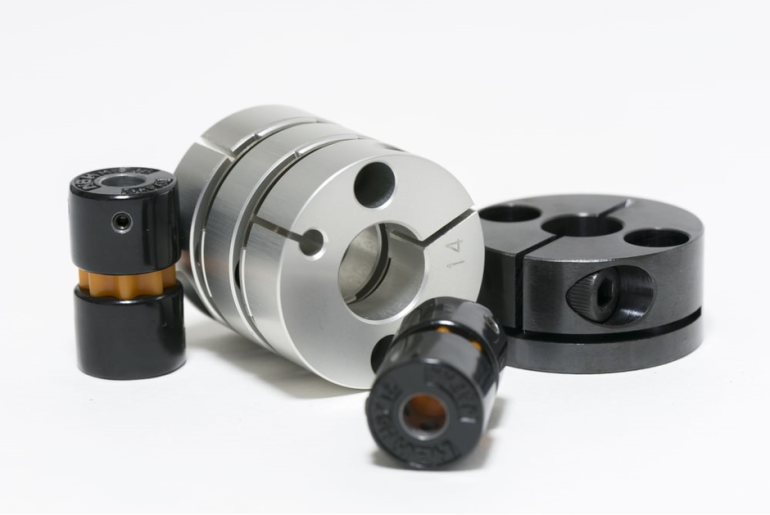What are Couplings
Shaft couplings are mechanical devices designed to connect two shafts together while allowing for a certain degree of misalignment between them. This misalignment can arise due to factors such as temperature fluctuations, wear and tear, and variations in positioning accuracy. The primary purpose of shaft couplings is to facilitate the seamless transfer of power from a driveshaft to a driven shaft, ensuring the smooth operation of various mechanical components. They play a vital role in various industrial applications, including motors, generators, pumps, compressors, turbines, engines, and machines.
Roles of the Shaft Coupling
Flexibility for Fatigue Life
In systems with connected machinery, the design of a flexible shaft involves finding a balance between acceptable offset for fatigue life and rotational speed. Operating above the first bending frequency can lead to destructive whirling, which most designs aim to avoid. Snubbers are often used to limit radial excursions and ensure smoother operation.
Power Transmission
The primary function of shaft couplings is power transmission. They enable the transfer of power from the driveshaft, powered by a source such as an electric motor, to the driven shaft, which in turn drives another component. This eliminates the need for a single, long shaft, which can be cumbersome and challenging to maintain.
Accommodation of Misalignment
Precision alignment of drive and driven shafts can be challenging and time-consuming. Misalignments caused by factors like thermal expansion, vibrations, and motion can lead to inefficiencies, wear, and increased risk of failure. Shaft couplings absorb these mounting and positioning errors, ensuring smoother operation and reducing stress on the components.
Protection to the Overall System
Shaft couplings provide protection to surrounding components. They dampen vibrations, reducing their impact on other parts. Additionally, they absorb shock loads, preventing the transfer of sudden impacts between shafts. In environments with high voltage, certain couplings offer electrical isolation for sensitive electronic components.
Types of Shaft Couplings
Fluid Couplings
Fluid couplings are specialized couplings that utilize hydraulic fluid to transmit torque between two shafts. This unique design consists of an impeller connected to the driving shaft and a runner connected to the driven shaft, all housed within a shell. As the driving shaft rotates, the impeller accelerates the hydraulic fluid, which then transfers its mechanical energy to the runner through contact with the runner blades. Fluid couplings find applications in automobile transmissions, marine propulsion, locomotives, and certain industrial setups involving constant cyclic loading.
Diaphragm Couplings
Diaphragm couplings are versatile shaft couplings capable of accommodating parallel, angular, and axial misalignments. They possess high torque capabilities and can transmit torque at high speeds without requiring lubrication. Typically consisting of two diaphragms with an intermediate member between them, diaphragm couplings are widely used in turbomachinery, including turbines, compressors, generators, and aircraft.
Jaw Couplings
Jaw couplings are employed in general low-power transmission and motion control applications. They can tolerate angular misalignment and do not necessitate lubrication. Comprising two hubs with intermeshing jaws connected by an elastomeric spider, jaw couplings effectively transmit torque, dampen vibration, and accommodate shock loads. Engineers commonly use jaw couplings in compressors, blowers, mixers, and pumps.
Beam Couplings
Beam couplings are known for their flexibility in parallel, axial, and angular misalignment scenarios. These machined couplings have helical cuts that can be adjusted to provide varying degrees of misalignment capabilities. Suitable for low-load applications, beam couplings are commonly used in servo motors and motion control in robotics.
Oldham Couplings
Oldham couplings are specialized couplings designed exclusively to address lateral shaft misalignment. Comprising two flanges and a center disc, oldham couplings are ideal for situations where parallel offset between shafts is present. The center disc compensates for lateral variation as the shafts move, enabling efficient power transmission between non-collinear shafts.
Gear Couplings
Gear couplings are robust couplings capable of handling high torque transmission. They accommodate angular and parallel misalignments and are commonly used in heavy-duty applications. Gear couplings consist of two hubs with external gear teeth, flange sleeves with internal gear teeth, and seals for optimal performance. Regular lubrication is required for their efficient operation.
Universal Joints (Hooke’s Joint)
Universal joints are employed when shafts intersect at a small angle and require torque transmission. Comprising hinges connected through a cross-shaft, universal joints accommodate small angular misalignment while providing high torque capacity. They find applications in diverse industries, including car gearboxes and differentials.
Conclusion
In conclusion, shaft couplings offer a diverse range of solutions to facilitate efficient power transmission across various industries. From fluid couplings utilizing hydraulic fluid to gear couplings with high torque transmission capabilities, each type of coupling serves specific needs and applications. Engineers and designers must carefully select the appropriate coupling type based on the requirements of their systems to ensure optimal performance and longevity.
Feel free to visit HVH Industrial Solutions if you have any questions, need more information, or are interested in purchasing any type of coupling.

